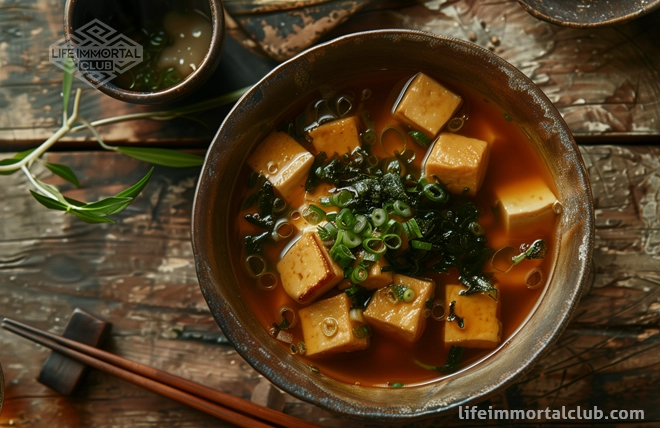The Nectar of Regeneration: Unlocking the Potent Powers of Cacao on Stem Cells and Tissue Rejuvenation

Cacao's Influence on Stem Cells and Tissue Regeneration
Cacao, the sumptuous star behind our beloved chocolate, has always been celebrated for its delectable flavor. But hold onto your sweet tooth, because recent scientific discoveries have uncovered a whole new side to cacao—a potential influence on stem cells and tissue rejuvenation.
This revelation is like unwrapping a golden ticket to Willy Wonka's chocolate factory in the world of regenerative medicine. It's like discovering the magical fountain of youth, but instead of a fountain, it's a chocolate bar. At the heart of this chocolatey marvel is a compound called epicatechin.
Epicatechin, a flavonoid generously present in cocoa delights like dark chocolate, isn't just about flavor. It's like the guardian angel of your cells, armed with antioxidants that shield them from the harmful effects of oxidation. But that's not all – epicatechin also moonlights as a peacemaker in your body's inflammatory battleground, helping to calm the chaos and promote tissue regeneration.
But wait, there's more! Cacao doesn't stop at just being a tissue whisperer; it's also a master of building new blood highways, a process known as angiogenesis. Think of it as cacao laying down the bricks for fresh, vital roads in your body. These new blood vessels play a crucial role in healing and tissue repair by delivering all the necessary goodies—like oxygen and nutrients—to the areas in need.
And that's not all the cacao magic. Studies have revealed that specific compounds in cacao are like the superheroes of anti-inflammation, working their wonders at both the cellular and systemic levels. These flavonoids, like procyanidins found in cocoa treats, are like the firefighters putting out the flames of inflammation in our bodies.
So, next time you're enjoying a square of dark chocolate or sipping on a hot cocoa, remember that you might just be indulging in a bit of tissue rejuvenation and inflammation taming. It's almost like your guilty pleasure is also your secret ally in the quest for a healthier you!
Now lets learn more about cacao for stem cells too...
Epicatechin Stimulating Stem Cell Production
Cacao, the magical ingredient that brings us the joy of chocolate, has always had a way of making us feel warm and fuzzy inside. But hold onto your cocoa cups, because recent scientific investigations have unveiled an astonishing link between cacao and its knack for jumpstarting the production of stem cells. These stem cells are like the superheroes of our bodies, with the incredible power to transform into various specialized cell types, making them indispensable for tissue regeneration and repair.
At the heart of this groundbreaking discovery is epicatechin, a mighty flavonoid found in abundance in cacao. Flavonoids are those natural compounds that plants produce, known for their antioxidant properties and the myriad of health benefits they bring. But when it comes to stem cell production, epicatechin steals the spotlight. Multiple studies have shown that epicatechin can significantly boost the circulation of stem cells in our bloodstream, hinting at its potential as a natural way to supercharge tissue regeneration.
So, how does epicatechin work its magic on stem cells? It's all about activating certain signaling pathways within our bodies that orchestrate the mobilization of stem cells. Think of these pathways as the conductors in a symphony, ensuring that stem cells are dispatched from their cozy niches in places like the bone marrow to wherever they're needed most for regeneration. By giving stem cell production a nudge, epicatechin offers a promising avenue for enhancing tissue repair throughout the body.
But that's not all; epicatechin has another trick up its sleeve. It seems to be particularly good at regulating blood flow to areas that are hurting or inflamed. This process, known as angiogenesis, is crucial for delivering the oxygen and nutrients needed for proper tissue healing and recovery. Inadequate blood flow can hamper these essential resources from reaching damaged areas, thwarting their natural regenerative powers. Studies have shown how epicatechin steps in to boost angiogenesis by promoting the growth of new blood vessels through increased production of vascular endothelial growth factor (VEGF). This growth factor is like the chief architect in the construction of new blood vessels, effectively aiding in tissue repair. The potent power of cacao for stem cells.
Angiogenesis Promoting Tissue Repair
Angiogenesis, the incredible process of crafting brand-new blood vessels, is the unsung hero when it comes to tissue repair and rejuvenation. And guess what? Cacao steps onto the stage with a superhero cape of its own, armed with the power to promote angiogenesis and make tissue repair a reality. The key player in this show is none other than epicatechin, that formidable flavonoid found aplenty in cocoa treats.
Epicatechin isn't just lounging around; it's actively rallying the troops of endothelial progenitor cells (EPCs), which are like the repair squad for damaged blood vessels. These EPCs are like the handymen of your circulatory system, able to migrate to where they're needed and transform into mature endothelial cells, the architects of new blood vessel construction. By giving EPC production a boost, cacao becomes a catalyst for angiogenesis, expediting the creation of fresh blood vessels and kickstarting the tissue repair process.
In addition to its direct promotion of angiogenesis, cacao also contributes to tissue repair by regulating blood flow. The flavonoids present in cacao stimulate the production of nitric oxide (NO), a molecule known for its vasodilatory properties. Nitric oxide widens blood vessels, improving circulation. Enhanced blood flow ensures efficient delivery of oxygen and essential nutrients to the damaged tissues, facilitating the healing process.
Cacao's role in promoting angiogenesis is instrumental in facilitating tissue repair and regeneration. Epicatechin's stimulation of endothelial progenitor cell production not only enhances the formation of new blood vessels but also combats inflammation that may hinder proper healing mechanisms. Additionally, cacao's ability to regulate blood flow through the production of nitric oxide further supports tissue repair by optimizing the delivery of nutrients and oxygen to the affected areas.
These findings highlight the potential therapeutic applications of cacao in regenerative medicine and underscore the importance of further research into harnessing its remarkable properties for clinical purposes.
Anti-inflammatory Effects of Flavonoids in Cacao
Flavonoids, a class of compounds found abundantly in cacao, have been widely recognized for their potential anti-inflammatory effects. These bioactive compounds exhibit the ability to modulate various inflammatory pathways in the body, making them a promising candidate for therapeutic interventions to reduce inflammation.
Inflammation is a fundamental process that is triggered as part of the body's immune response to injury or infection. However, chronic inflammation can lead to tissue damage and contribute to the development of various diseases such as cardiovascular disorders, neurodegenerative conditions, and even cancer.
Studies have demonstrated that flavonoids present in cacao can effectively inhibit pro-inflammatory enzymes known as cyclooxygenases (COX) and lipoxygenases (LOX), which play crucial roles in mediating inflammatory responses. By inhibiting these enzymes, flavonoids help suppress the production of inflammatory mediators like prostaglandins and leukotrienes that are involved in promoting inflammation.
Furthermore, flavonoids also exert their anti-inflammatory effects by modulating signaling pathways involved in the regulation of immune cells' function. These mechanisms collectively contribute to reducing inflammation and potentially protecting against chronic disease development.
Moreover, research suggests that cacao-derived flavonoids possess the remarkable ability to regulate nitric oxide (NO) production within blood vessels. Nitric oxide is a key molecule involved in maintaining vascular health and regulating blood flow.
Flavonoids have been shown to enhance endothelial function by stimulating NO synthesis while also preventing its excessive production under certain conditions. This dual action helps maintain vascular homeostasis by ensuring proper blood vessel dilation while preventing oxidative stress-induced damage caused by excessive NO levels.
The anti-inflammatory effects of flavonoids found abundantly in cacao offer promising therapeutic potential for mitigating chronic inflammation-related diseases. By targeting key inflammatory pathways and modulating immune cell function, these bioactive compounds hold promise for reducing tissue damage associated with prolonged inflammation.
Additionally, their ability to regulate nitric oxide production helps maintain proper blood flow and vascular health. Further research is necessary to fully elucidate the specific mechanisms by which cacao-derived flavonoids exert their anti-inflammatory effects, paving the way for potential therapeutic applications in the future.
Procyanidins Protecting Cells from Oxidative Damage
Procyanidins, a class of flavonoids abundantly found in cacao, possess remarkable properties in safeguarding cells against oxidative damage. Oxidative stress occurs when there is an imbalance between the production of reactive oxygen species (ROS) and the body's antioxidant defenses. This imbalance can lead to cellular damage and has been implicated in various chronic diseases, including cardiovascular disorders, neurodegenerative conditions, and even cancer.
However, research suggests that procyanidins act as potent antioxidants, countering the harmful effects of ROS and promoting cellular health. Studies have demonstrated that procyanidins exert their protective effects through multiple mechanisms. Firstly, these robust flavonoids scavenge free radicals and reactive oxygen species present in our environment or generated within our bodies as byproducts of metabolism. By neutralizing these highly reactive molecules, procyanidins prevent them from damaging cellular structures such as proteins, lipids, and DNA.
Furthermore, procyanidins have been found to enhance endogenous antioxidant defense systems within cells. This includes increasing the production of crucial enzymatic antioxidants such as superoxide dismutase (SOD), catalase (CAT), and glutathione peroxidase (GPx). These enzymes play a vital role in detoxifying ROS by converting them into less harmful substances or neutralizing them altogether. Additionally, research suggests that procyanidins may also improve mitochondrial function and promote energy metabolism within cells.
Mitochondria, the powerhouses of our cells responsible for generating adenosine triphosphate (ATP), serve as the primary source of cellular energy. By optimizing mitochondrial function and reducing oxidative stress on these vital organelles, procyanidins contribute to overall cellular health.
The presence of procyanidins in cacao offers significant protection against oxidative damage to cells. Their ability to scavenge free radicals, enhance endogenous antioxidant systems, and improve mitochondrial function makes them potent allies in maintaining cellular health. By incorporating cocoa products rich in procyanidins into our diets, we can potentially mitigate the harmful effects of oxidative stress and promote overall well-being. Moreover, further research is warranted to explore the full extent of procyanidins' protective effects and their potential therapeutic applications in combating oxidative stress-related diseases.
Potential Benefits Against Cognitive Decline
Cognitive decline, a natural part of aging, can have significant impacts on overall well-being and quality of life. However, scientific research suggests that certain compounds found in cacao may have the potential to mitigate cognitive decline and support brain health.
One such compound is epicatechin, a flavanol abundant in cocoa products. Epicatechin has been shown to improve cognitive function by promoting neurogenesis and enhancing synaptic plasticity.
Neurogenesis refers to the process of regenerating stem cells into new neurons within the brain. Studies indicate that epicatechin stimulates neurogenesis in specific regions associated with memory and learning, such as the hippocampus.
By encouraging the growth of new neurons, cacao-derived flavanols like epicatechin may help offset age-related cognitive impairments. Moreover, epicatechin's role in enhancing synaptic plasticity is crucial for maintaining optimal brain function.
Synaptic plasticity refers to the ability of synapses (connections between neurons) to strengthen or weaken over time, allowing for efficient information processing and storage. Flavanols found in cacao have been shown to facilitate synaptic plasticity through various molecular mechanisms, leading to improved memory formation and retention.
In addition to epicatechin's impact on cognitive function, other compounds present in cacao exhibit potential benefits against cognitive decline as well. For instance, flavonoids possess powerful anti-inflammatory properties that can suppress inflammatory responses within the brain.
Chronic inflammation has been implicated in age-related neurodegenerative disorders such as Alzheimer's disease. By reducing inflammation, flavonoids found in cacao may safeguard against neurodegeneration and preserve cognitive abilities.
Overall, while more research is needed to fully understand the mechanisms behind cacao's potential benefits against cognitive decline, current evidence suggests that its bioactive compounds like epicatechin and flavonoids hold promise for supporting brain health and mitigating age-related cognitive impairments. Incorporating moderate amounts of cacao or cocoa products into one's diet may serve as a delicious and potentially beneficial addition to a comprehensive approach for maintaining cognitive function throughout the aging process.
Antioxidant Properties of Cacao and Cellular Health
While the regenerative potential of cacao and its impact on stem cells have gained considerable attention, another fascinating aspect lies in its antioxidant properties and their profound effects on cellular health. Cacao is rich in flavonoids, a class of plant compounds known for their potent antioxidant activity.
These compounds play a crucial role in mitigating oxidative stress and protecting cells from damage caused by free radicals. Research has shown that the flavonoids present in cacao possess remarkable anti-inflammatory properties.
They can suppress inflammatory responses by inhibiting the production of pro-inflammatory enzymes like cyclooxygenase-2 (COX-2) and inducible nitric oxide synthase (iNOS). By reducing inflammation, these flavonoids contribute to maintaining cellular homeostasis and preventing chronic diseases associated with prolonged inflammation.
Moreover, cacao's antioxidant properties extend beyond alleviating oxidative stress. Flavonoids found in cocoa products such as epicatechin have been shown to enhance the activity of endogenous antioxidants within cells.
This means that they not only scavenge harmful free radicals themselves but also boost the natural defense systems that protect against oxidative damage. By promoting a balanced redox state within cells, cacao contributes to overall cellular health and function.
Furthermore, studies have demonstrated that certain components of cacao play a role in regulating blood flow, which is crucial for cellular health. The vasodilatory effects of flavonoids found in cacao help relax blood vessels, enhancing circulation throughout the body.
Improved blood flow ensures adequate oxygen and nutrient supply to cells while facilitating the removal of waste products. This optimal microenvironment promotes cellular vitality and supports various regenerative processes.
Cacao's antioxidant properties are pivotal for maintaining cellular health by reducing inflammation, protecting against oxidative damage through endogenous antioxidant mechanisms, and promoting adequate blood flow to nourish tissues at a microvascular level. The multifaceted benefits offered by these compounds highlight the potential of cacao in promoting regenerative processes within the body and maintaining overall wellbeing.
Inhibition of Pro-Inflammatory Enzymes by Flavonoids
Inflammation is a natural response of the body's immune system to protect against harmful stimuli such as pathogens or tissue injury. However, chronic inflammation can lead to various health issues, including cardiovascular disease, arthritis, and neurodegenerative disorders.
Flavonoids found in cacao have been shown to play a crucial role in inhibiting pro-inflammatory enzymes and mitigating these inflammatory responses. One group of flavonoids present in cacao, known as catechins, has demonstrated potent anti-inflammatory properties.
Catechins act by suppressing the activity of certain enzymes involved in promoting inflammation, such as cyclooxygenase-2 (COX-2) and lipoxygenase (LOX). By inhibiting these pro-inflammatory enzymes, flavonoids help reduce the production of inflammatory mediators like prostaglandins and leukotrienes.
This inhibition ultimately alleviates inflammation in tissues and organs throughout the body. Furthermore, flavonoids found in cacao also exhibit antioxidant effects that contribute to their anti-inflammatory properties.
Oxidative stress plays a significant role in promoting inflammation by generating reactive oxygen species (ROS) that damage cells and trigger inflammatory signaling pathways. The high levels of antioxidants present in cacao help neutralize these harmful free radicals and prevent oxidative damage.
By reducing oxidative stress, flavonoids indirectly suppress inflammatory responses and promote cellular health. Moreover, studies have suggested that certain flavonoids found abundantly in cocoa products can modulate immune cell activity.
For instance, epicatechin - a prominent flavanol present in cacao - has been shown to regulate immune responses by modulating signal transduction pathways within immune cells. This modulation helps maintain balanced immune function without excessive activation or suppression of the immune system.
By regulating blood flow through vasodilation effects and improving vascular function, cocoa products ensure proper delivery of nutrients and oxygen to tissues while efficiently removing waste products. The presence of flavonoids in cacao provides notable benefits in inhibiting pro-inflammatory enzymes, reducing oxidative stress, and modulating immune responses.
These anti-inflammatory properties contribute to the overall health of cells and tissues by suppressing inflammation and promoting regeneration of stem cells. Incorporating cocoa products into a balanced diet may offer potential therapeutic benefits against chronic inflammatory conditions, benefiting individuals seeking natural approaches to reduce inflammation and improve overall well-being.
Nitric Oxide Regulation Improving Blood Flow
One of the remarkable benefits of cacao consumption lies in its ability to regulate nitric oxide levels in the body, leading to improved blood flow. Nitric oxide is a crucial molecule involved in the dilation of blood vessels, allowing for increased circulation and nutrient delivery to various tissues.
Flavonoids present in cacao, such as epicatechin and catechin, have been found to stimulate the production of nitric oxide synthase (NOS), an enzyme responsible for synthesizing nitric oxide. Research has shown that cocoa products rich in flavonoids can enhance nitric oxide production, resulting in vasodilation and improved blood flow.
In a study conducted on healthy individuals, consumption of a high-flavonoid cocoa beverage led to increased levels of circulating nitric oxide metabolites and enhanced endothelial function. This suggests that regular intake of cacao may promote cardiovascular health by optimizing blood vessel function.
Furthermore, the regulation of nitric oxide by cacao can also be beneficial for tissue regeneration and repair. By improving blood flow, adequate oxygenation and nutrient supply are ensured to damaged tissues or areas undergoing regeneration.
This enhanced nutrient delivery facilitates healing processes and supports the growth and differentiation of regenerating stem cells. In addition to its role in regulating nitric oxide levels, cacao's flavonoids also possess anti-inflammatory properties that further contribute to improved blood flow.
Chronic inflammation can impair vascular function by causing endothelial dysfunction and constriction of blood vessels. However, studies have shown that flavonoids present in cacao can suppress inflammatory responses by inhibiting pro-inflammatory enzymes like cyclooxygenase-2 (COX-2) and inducible nitric oxide synthase (iNOS).
By reducing inflammation within blood vessels, these compounds promote vasodilation and maintain optimal blood flow. This section, the consumption of cacao and its flavonoids can positively influence blood flow regulation through nitric oxide modulation.
By stimulating nitric oxide production and possessing anti-inflammatory properties, cacao facilitates vasodilation, improves endothelial function, and supports tissue regeneration. These findings highlight the potential of incorporating cacao into dietary habits to promote cardiovascular health and enhance overall well-being.
Additional Health Benefits Related to Pain Management
In addition to its remarkable ability to stimulate stem cells and promote tissue regeneration, cacao also possesses several health benefits related to pain management.
The unique combination of compounds found in cocoa products has been shown to have a significant impact on reducing inflammation, which can alleviate various types of pain. One of the key mechanisms through which cacao aids in pain relief is by regulating blood flow.
The flavonoids present in cacao have been found to improve vasodilation, ensuring optimal blood circulation throughout the body. This increased blood flow can help deliver essential nutrients and oxygen to damaged tissues, aiding in their repair and reducing pain.
Furthermore, the anti-inflammatory properties of cacao suppress inflammatory responses within the body. Chronic inflammation is often associated with conditions such as arthritis or fibromyalgia, leading to persistent pain and discomfort.
Flavonoids present in cacao have been observed to inhibit pro-inflammatory enzymes, thereby reducing inflammation and subsequently alleviating pain associated with these conditions. Moreover, recent studies suggest that cacao's ability to stimulate stem cell production may play a role in relieving pain as well.
Stem cells possess regenerative properties and can differentiate into different cell types within the body. By promoting stem cell proliferation, cacao may contribute to tissue repair and regeneration, ultimately leading to reduced pain levels.
Beyond its well-known effects on stem cells and tissue regeneration, cacao offers additional health benefits related to pain management. Its ability to reduce inflammation through flavonoids helps alleviate various types of pain while regulating blood flow ensures optimal nutrient delivery for tissue repair.
Moreover, stimulating stem cell production may further contribute to pain relief by aiding in tissue regeneration processes. Embracing the potential therapeutic properties of cacao could pave the way for innovative approaches towards managing chronic pain conditions.
Conclusion
The wealth of scientific evidence suggests that cacao and its flavonoids exhibit remarkable potential in promoting stem cell production, tissue regeneration, reducing inflammation, and enhancing cellular health. The presence of epicatechin in cacao has been found to stimulate stem cell production, leading to increased tissue repair and regeneration.
This is particularly promising for individuals suffering from degenerative diseases or those seeking enhanced healing capabilities. Furthermore, the flavonoids found in cacao display powerful anti-inflammatory effects by suppressing inflammatory responses and reducing oxidative damage.
The procyanidins present in cacao act as potent antioxidants that protect cells from free radicals, enhancing their overall health. Additionally, these compounds have been shown to regulate blood flow by improving nitric oxide availability, which contributes to better oxygenation and nutrient supply to tissues.
Moreover, emerging research indicates that cacao's flavonoids may offer protection against cognitive decline. By modulating inflammation and oxidative stress markers in the brain, these bioactive compounds hold promise as a neuroprotective tool for maintaining cognitive function as we age.
While more studies are needed to fully understand the scope of cacao's potential benefits for regenerating stem cells and tissue repair, the current evidence is undeniably compelling. Incorporating cocoa products into a well-balanced diet may provide an enjoyable way to reap some of these benefits while satisfying our taste buds.
With ongoing research efforts exploring this fascinating realm of science, we can remain hopeful that future advancements will unlock even more therapeutic applications of cacao's remarkable properties. Harnessing the power of cacao's flavonoids holds great promise for stimulating stem cell production, promoting tissue repair through angiogenesis and reducing inflammation within the body.
These natural compounds found abundantly in cocoa products have demonstrated antioxidant properties along with their ability to regulate blood flow while protecting cells from oxidative damage. As scientific exploration continues into this captivating field of study, there is reason to remain optimistic about the potential health benefits that cacao may offer in regenerative medicine and overall well-being.







